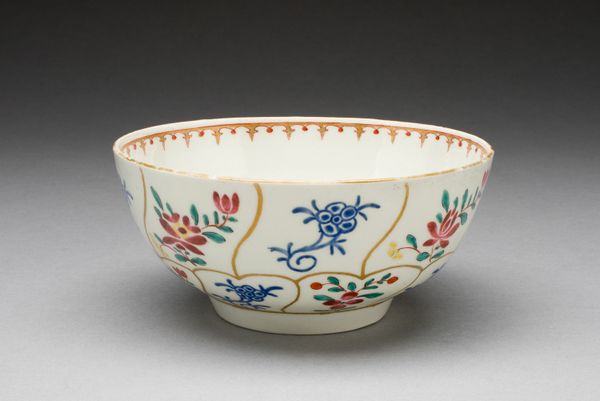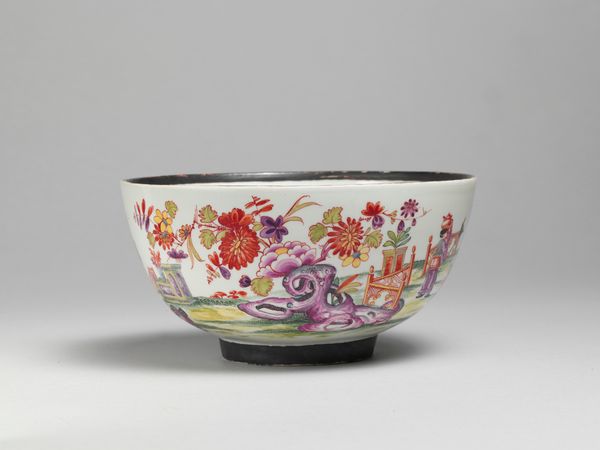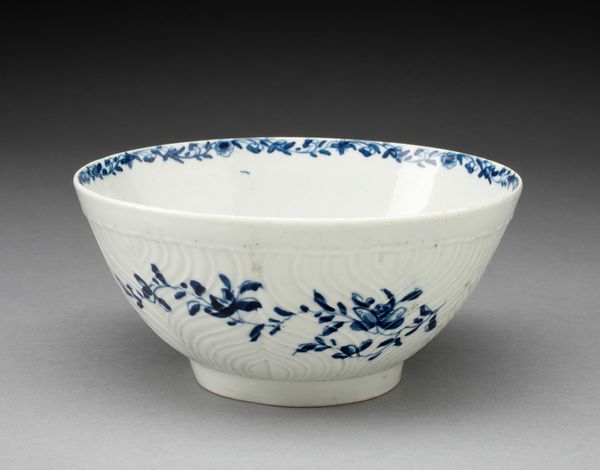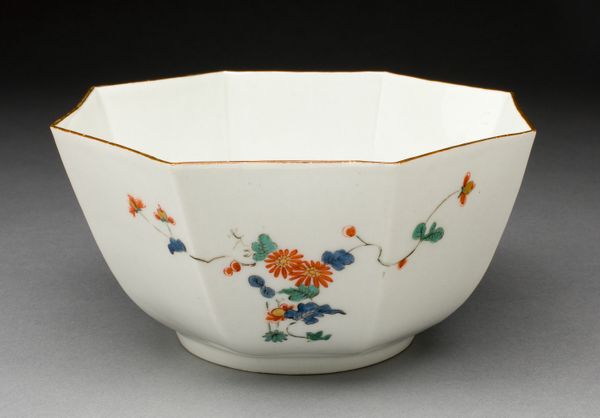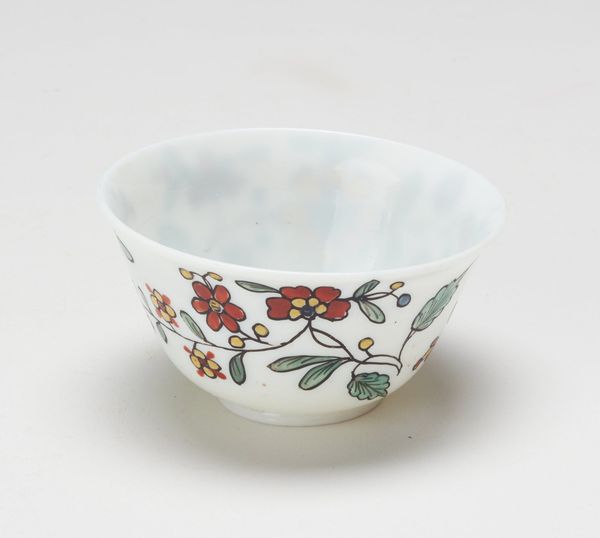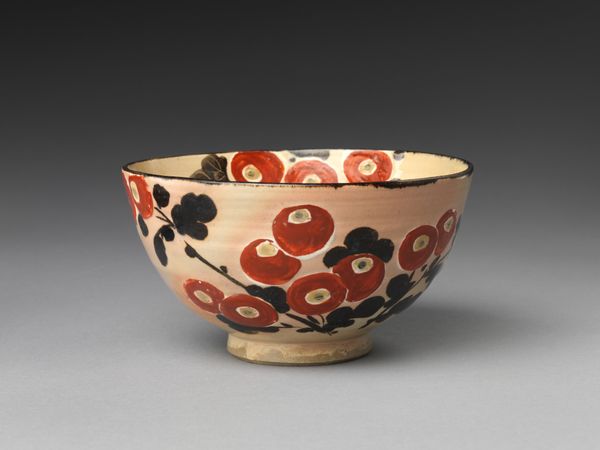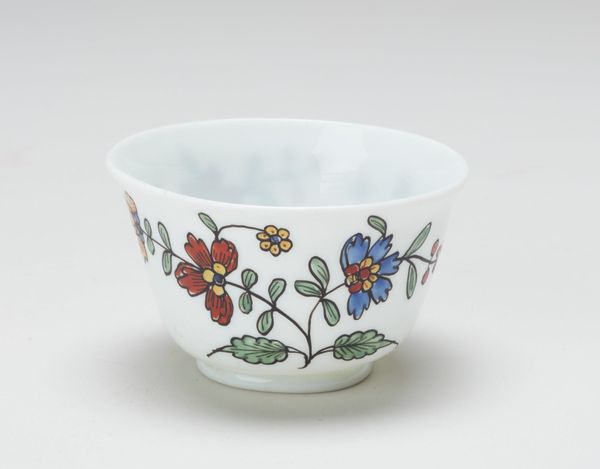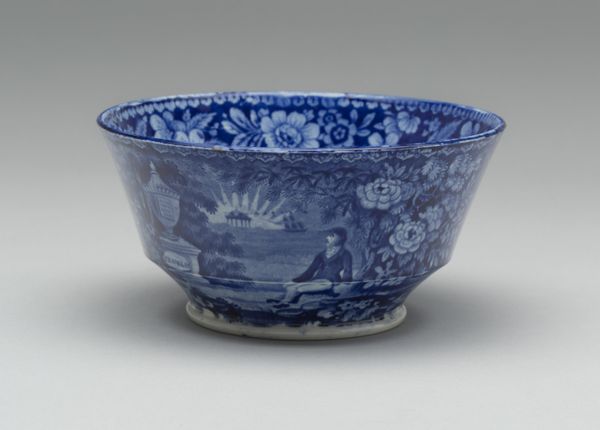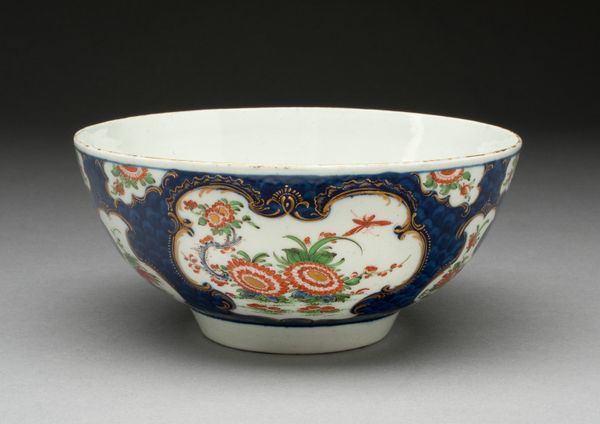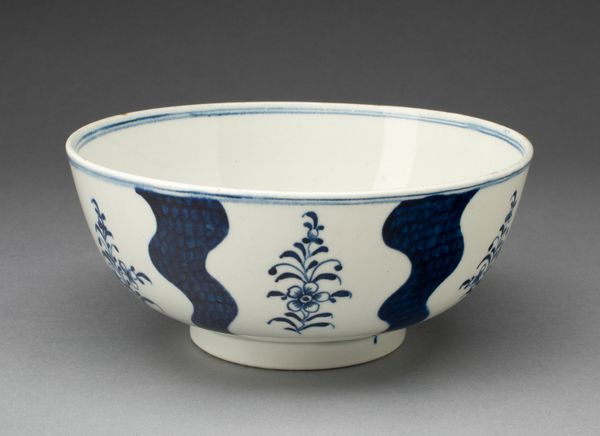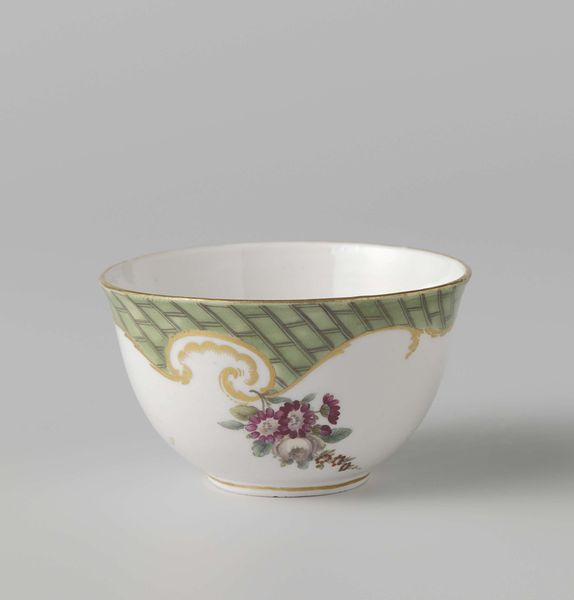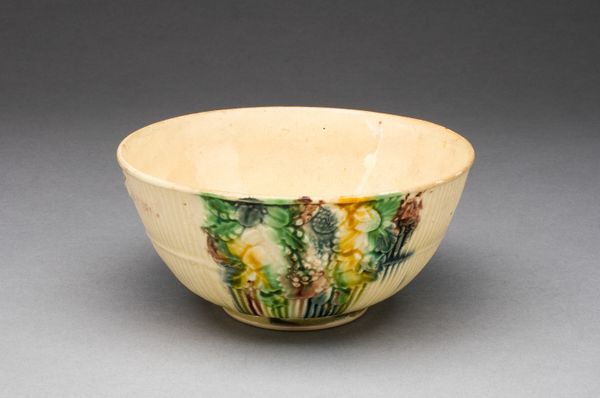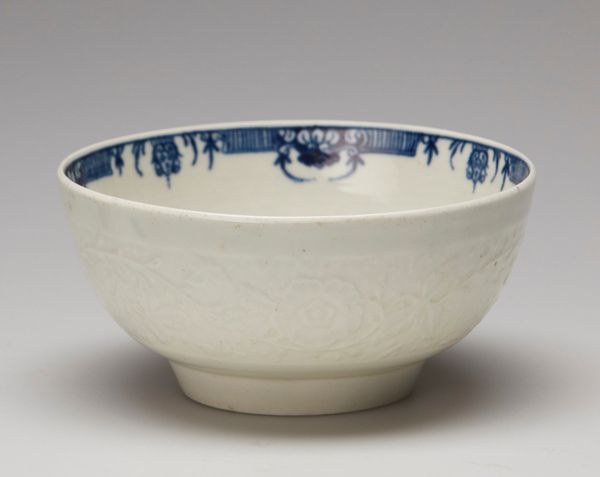
ceramic, porcelain
#
ceramic
#
porcelain
#
ceramic
#
decorative-art
#
rococo
Dimensions: 6.7 × 17.1 cm (2 5/8 × 6 3/4 in.)
Copyright: Public Domain
Curator: The way these cobalt blues and rusty oranges embrace that white porcelain gives it the most luscious feeling of ripeness. Editor: Indeed. Let's delve into this exquisite piece. What we're seeing is a bowl crafted by the Vauxhall Porcelain Factory, sometime between 1760 and 1764. Curator: Vauxhall, huh? Always imagined their creations brimming with gossip, tea leaves, and furtive glances. Is it the Rococo influence lending that air of decadent secrecy? Editor: Rococo certainly plays a role. Those swirling floral motifs speak of a love for elaborate ornamentation. Porcelain, in particular, acquired potent symbolic meanings for trade, artistry, and imperial power, signifying technological prowess and global commerce. Curator: The way those floral patterns creep from the bottom… like desire unfurling, threatening to swallow all that clean white space. Did this bowl ever see jam, or just powdered faces reflected in its glaze? Editor: Porcelain at this time was extremely desirable for tea-drinking, display, and gift-giving. The stylized naturalism you see in these flowers also has earlier symbolic associations; consider the deep, historical connection of the peony to riches, honor, and beauty, stretching back to ancient Chinese dynasties. Curator: Makes me wonder about the hands that shaped this, all that time ago. I bet the artist hummed some ditty while chasing these hues around in its form, dreaming about rouge. The transience of life captured with colors that just pop! Editor: Exactly, and these motifs, borrowed and translated across cultures, become potent conveyors of cultural memory, resonating with those who recognized their meaning. What do you make of the symmetry here? The deliberate, almost regimented, arrangement of these blooming things. Curator: It gives an illusion of order, of elegance—but then, these explosions of bloom and color resist all that forced elegance. A struggle in material form—controlled indulgence perhaps? I see something akin to bottled, very stylish rage, maybe? Editor: That’s an insightful observation. Porcelain’s very fragility also speaks to an almost precious precariousness, where so much care goes into the rendering of its decoration as well as protecting it from inevitable breakage, like our passing lives, no? Curator: Perhaps. Either way, holding this must've been such a sensory experience back then... Imagine, sipping tea on a warm, lazy, sun-kissed morning, feeling utterly immortal, if only for a brief minute. Editor: Ultimately, whether brimming with sweetmeats or silent secrets, this porcelain bowl offers a window into the heart of 18th-century artistry, symbolism, and society, its lustrous surface whispering stories across time.
Comments
No comments
Be the first to comment and join the conversation on the ultimate creative platform.
